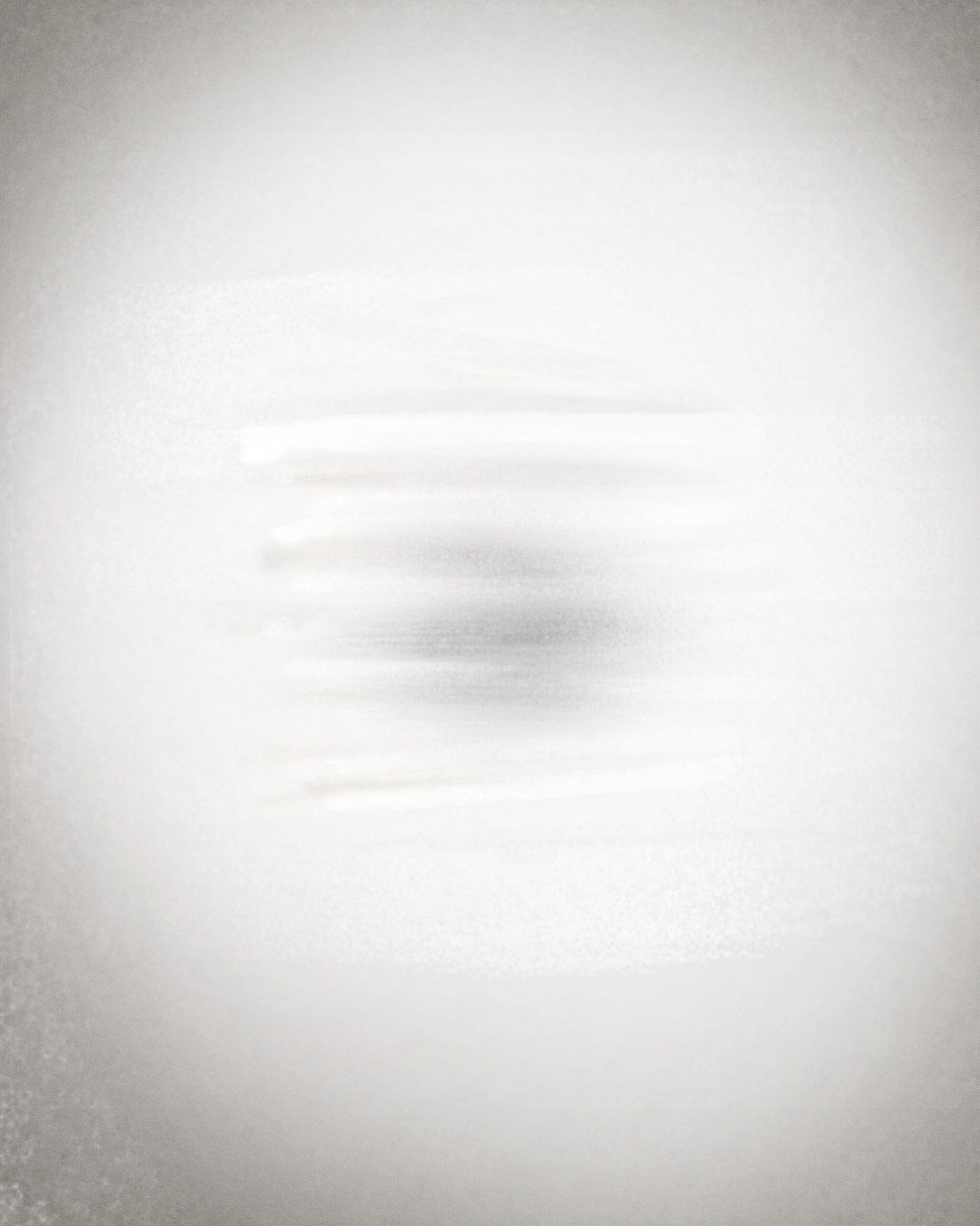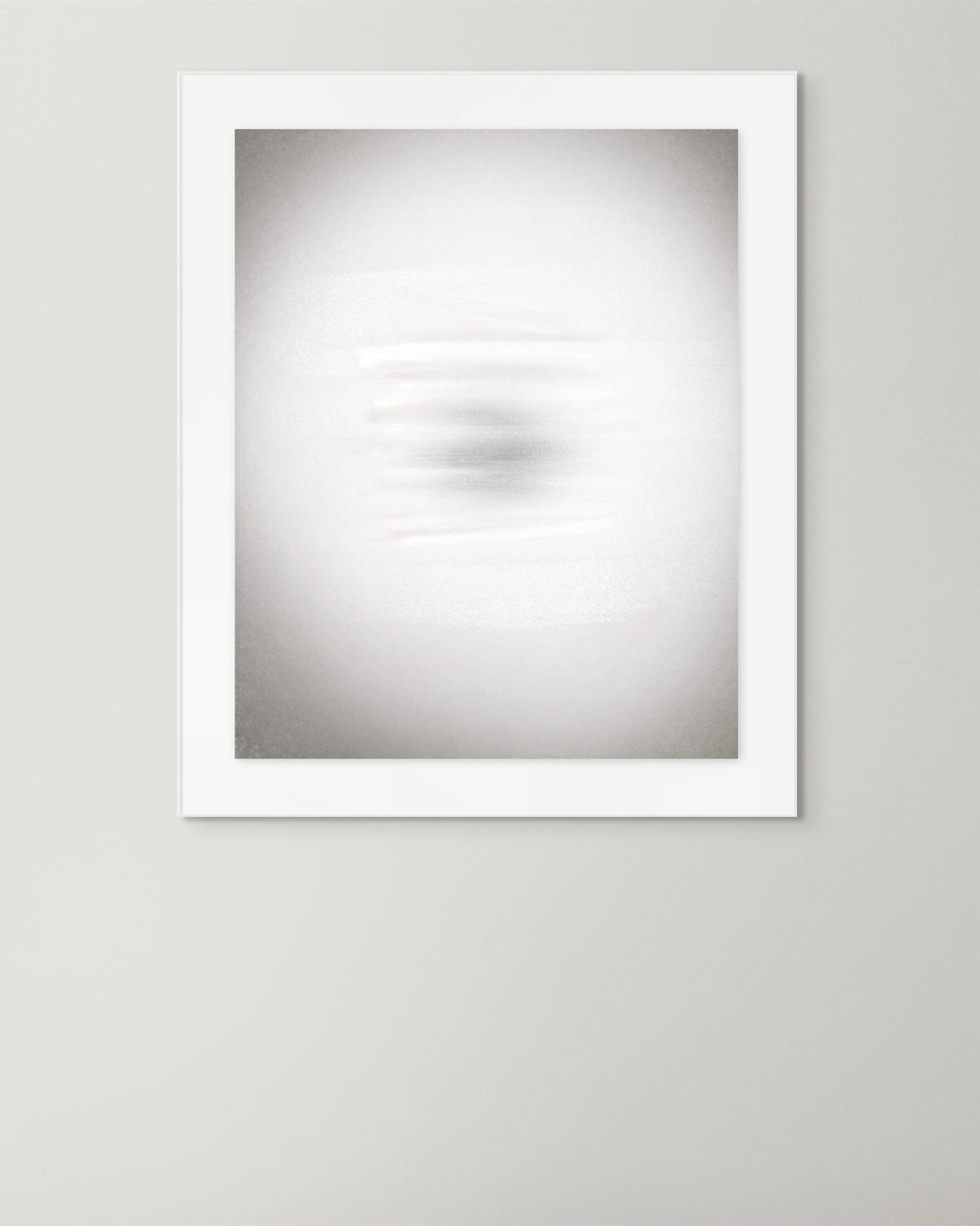Dispersal Trace
Liminal Drift
Exploring Dispersal Trace
Dispersal Trace is the fourth work in my Liminal Drift series. It grew from my exploration of transitional states — places where forms dissolve and reappear. Nothing feels fully fixed here.
This piece suggests a subtle tension between presence and absence. Soft veils of light drift across a dense background. As a result, they create the illusion of movement within stillness. A fragment hovers, its contours blurred, caught between arrival and departure.
Viewers are invited to slow down and observe how traces emerge and vanish. Layers of opacity and shifting depth suggest intimacy, yet also distance. The work gently pulls between material presence and quiet dissolution.
Dispersal Trace exists as a still image. However, it began as an animated motion sketch. In this way, faint echoes of movement remain embedded within its surface and texture.
The Beauty of Subtlety
It is worth noting that the simplicity of Dispersal Trace — and of the Liminal Drift series — is intentional. Minimal gestures, soft gradients, and blurred forms are not incomplete. Instead, they reflect my choice to focus on restraint and subtlety.
In a world filled with visual noise, I am drawn to quieter spaces. These works do not seek to explain or impress. They invite each viewer to slow down and notice small details. Stillness becomes a space for reflection and ambiguity becomes a place for exploration.
Like many works in the Liminal Drift series, Dispersal Trace also connects with the concept of “liminality.” This term describes transitional spaces where boundaries blur and definitions fade. Many artists and philosophers explore this idea. A brief overview of liminality can be found here.
A glimpse of its earlier development process is available in my Work In Progress notes.
More from the Liminal Drift series is available online.
Ultimately, Dispersal Trace offers a quiet pause. It allows space to observe subtle shifts and drift through layers of perception. Each viewer brings personal meaning, shaped by memories and moods. In this way, the work stays open — unfinished not in form, but in experience, always waiting to be completed by another gaze.


